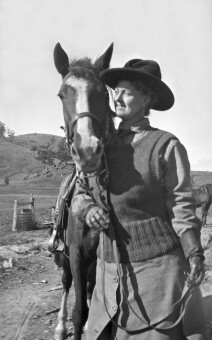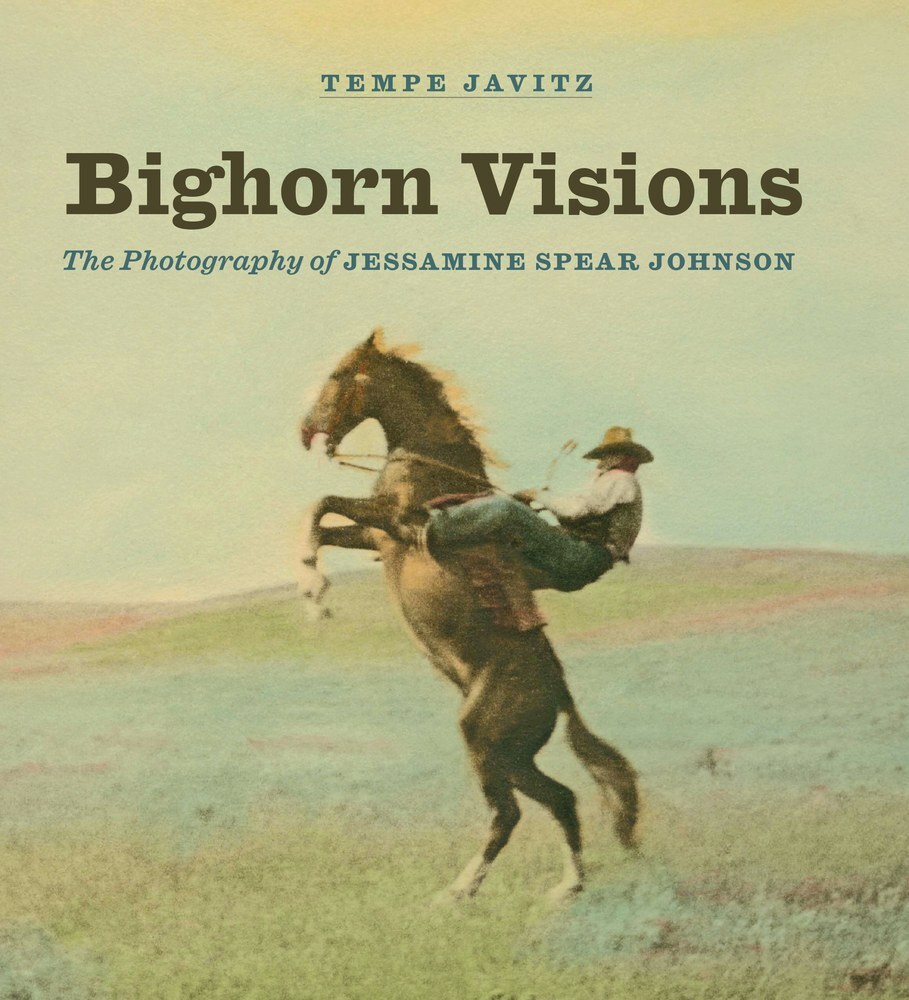BILLINGS — Jessamine Spear Johnson was born in 1886 on the eastern front of the Bighorn Mountains. Her mother began taking photographs as a hobby, and at age 10, Jessamine discovered her own love of the art form.
But Jessamine's photos were tucked away in boxes for decades—until they were recently brought to light by her granddaughter, Tempe Javitz.

“Jessamine Spear Johnson— I was a Johnson— was my grandmother. My father was her fifth child," Javitz said. “My grandmother, at about age 10, her mother had started taking photographs with a glass-plate camera. She started helping her mom. Well after Jessamine got married, we find her workbook of all of her expenses. She was letting her husband know where she’d spend money. And in 1908, she bought her first film camera, a Brownie, for $2."

After around 16 years of sorting thousands of photographs she previously didn't know existed, Javitz had a plan for how she wanted to share her grandmother's work.
"I spent years with 34 boxes of (Jessamine's) photographs I was scanning. I now have over 16,000 images on my computer. Not all of them are in terrific shape," Javitz said. “Many years later, I’m married, living out in California but I went home every summer. I’m visiting with Annabelle, her oldest child and one of my favorite aunts, and Annabelle gave me 23 of her diaries. And that started the idea that I was going to rescue her."

Javitz grew up in Montana but now lives in California. She'll be visiting the Treasure State next month for one special reason.
"The book that I just published with the South Dakota Historical Society Press, it’s called ‘Bighorn Visions: The Photography of Jessamine Spear Johnson’," Javitz said. “I’ve been invited to the South Dakota Festival of Books at the end of September. I’m going back to Montana and Wyoming in late August, early September, and I have several book signings to go to there."

In April, Javitz's book, 'Bighorn Visions: The Photography of Jessamine Spear Johnson' hit the shelves, featuring photos from Jessamine.
“Jessamine never went anywhere without her camera.... Because the photos follow that," Javitz said. “She was capturing, you know, what it was like to live then, what it was like to ranch. There are lots of cattle, sheep, dude ranching photos. But there are also historical photos.”

The photographs serve as a time capsule from the days of the wild, wild west.
“Her legacy is important, and I think it’s important for more people to realize that women through time have been doing important artistic work," Javitz said.

Johnson was a pioneer in more ways than one, snapping photographs of life across Montana and Wyoming. She lived during a time when women were just starting to enter the workforce and become more independent.
But photographers like her were rare.
“Photography is not as common among these women as we would like to think. And in large part, that’s simply because photography is an expensive hobby," said Lauren Hunley, a community historian at the Western Heritage Center in Billings. “We don’t have a lot of women, specifically a lot of people in total, looking at photography as an extra hobby. We do have a lot of professional photographers, but it’s different when you’re a professional."

Hunley says Jessamine’s candid photography paints a picture of what life was actually like back then.
"They documented what they did on a daily basis, what’s happening on their ranch," Hunley said. "As a historian, those are the photographs that are vitally important to us."
Photographs that preserve Western history—and are now documented for all to see.

"The photos there are historically, amazingly important. I had no idea how important until I started doing more research," Javitz said. “One of the things that I think is important about what my grandmother Jessamine photographed is this was happening in her lifetime. Women were joining roundups, women were breaking horses, women were being equal partners in ranching. That all happened within her lifetime and with her own girls. She had a feeling, I’m sure, that she was seeing history happen."
To learn more about Johnson and Javitz, visit Javitz's website.
To purchase 'Bighorn Visions: The Photography of Jessamine Spear Johnson', click here.




